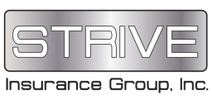|
1. Develop a Business Contingency Plan
3. Review Your Insurance There are several forms of business insurance coverage to consider and discuss with your insurance professional:
0 Comments
Leave a Reply. |
Categories
All
Archives
February 2024
|
NOTICE: This blog and website are made available by the publisher for informational purposes only. It is not to be used as a substitute for competent insurance, legal, or tax advice from a licensed professional in your state. By using this blog site you understand that there is no broker client relationship between you and the blog and website publisher.
